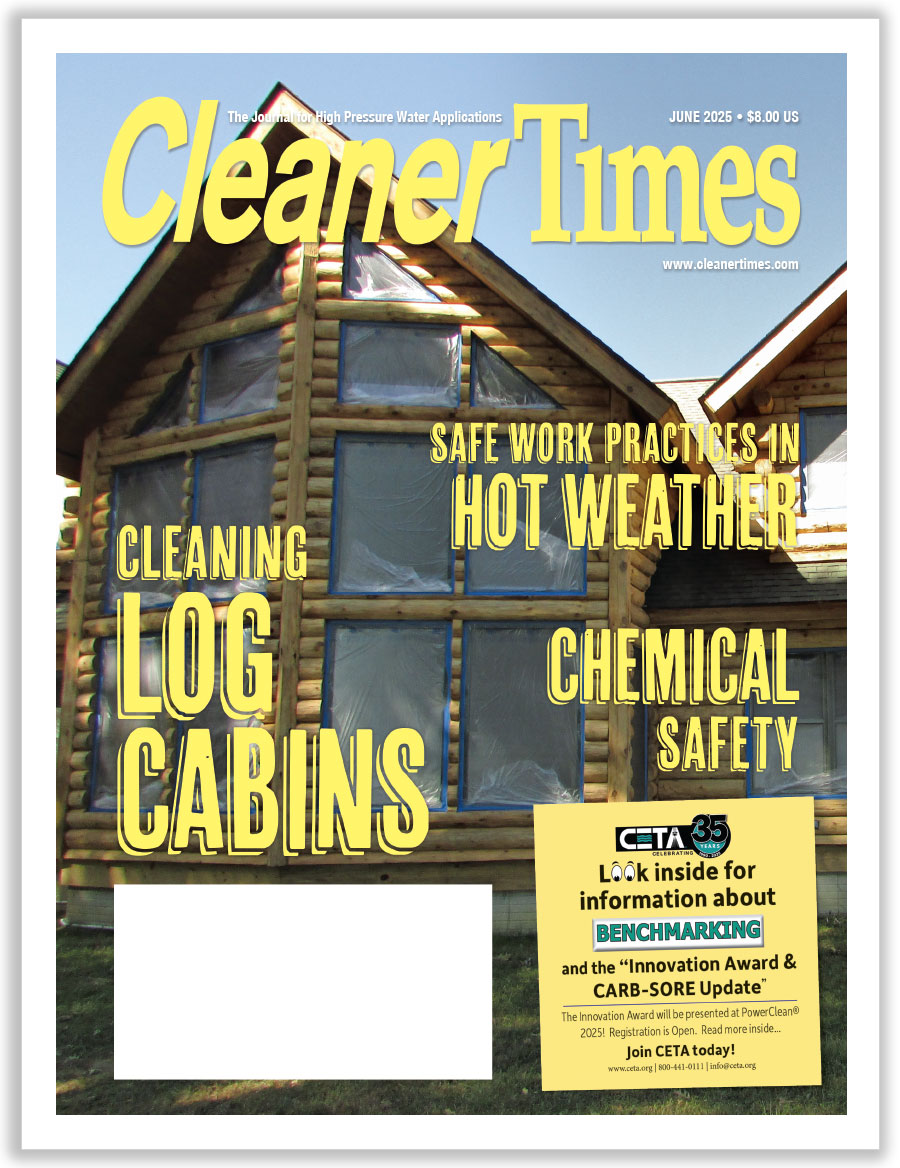
CETA Edge
Technical Issues
By Diane M. Calabrese / Published July 2022

Do you have questions about technical issues? The CETA Technical and Standards Committee endeavors to provide answers. Jimmy Welch with American Pressure Inc. in Robbinsdale, MN, chairs the committee.
With Prop 65 warnings now on items as disparate as cereal and cleaning agents, we know how quickly regulations originating in California can overtake the nation. If a company wants to sell products in the Golden State, it must adhere to requirements to warn of potential and known carcinogens, and that’s that.
Businesses across the nation have integrated regulations stemming from California Proposition 65 into the routine of business. Now, they aim to do the same with regulations for small off-road engines that derive from the California Air Resources Board (CARB).
SORE (acronym for small off-road engines) rules can be vexing. One thing that makes them so is that they are still in flux as they are commented on and finalized.
The current California AB-1346 Air Pollution: small off-road engines (SORE), which includes pressure washers, states, “The Governor’s Executive Order No. N-79-20 of September 23, 2020, directs the state board to implement strategies to achieve 100 percent zero emissions from off-road equipment in California by 2035, where feasible and cost-effective. The state will not achieve that goal without further regulation of SORE, including a mandate to transition all sales of new equipment to zero-emission equipment,” and, “the state board shall, consistent with federal law, adopt cost-effective and technologically feasible regulations to prohibit engine exhaust and evaporative emissions from new small off-road engines, as defined by the state board. Those regulations shall apply to engines produced on or after January 1, 2024, or as soon as the state board determines is feasible, whichever is later.”
The SORE regulations, which are administered via CARB, establish a complex system of emission reduction credits. In short, a manufacturer can include in its mix of products some engines (engine-powered equipment) that exceed CARB limits for HC [hydrocarbons] and NOx [nitrogen oxides] if other engines/engine-powered equipment in its product mix fall under the limits. Average, bank, and trade is the concept.
Thanks in great part to the due diligence and public comments of CETA members, the Cleaning Equipment Trade Association was able to forestall the implementation of CARB standards for pressure washers to model year 2024 and to get a more gradual phase-in. Even with that, the final specifications are still in flux.
For instance, Welch points to changes in exhaust reduction and evaporative requirements that have been made recently to rules for pressure washers, and questions persist about which rules are final and which can still be amended.
Let’s look at the big picture of what we know in late May 2022 (as we write): Expectations for engines (beginning with model year 2024) are outlined for two engine groups of concern for our industry.
One group comprises spark-ignition engines (except generator engines and pressure washer engines larger than 225 cc). The other group comprises pressure washer engines that are greater than 225 cc.
Consider what the rule in its current form specifies for both types of engines regarding HC + NOx emissions (in grams per kilowatt-hour). By 2024 and subsequently, emissions of hydrocarbons plus oxides of nitrogen for spark-ignition engines must be at zero. There’s more leniency for the pressure washer engines greater than 225 cc, which are not required to meet the zero standard until 2028 (and subsequently).
For years 2024 through 2027, pressure washer engines from 225 cc to 825 cc must release no more than 3.0 grams per kilowatt hour of HC + NOx. Pressure washer engines greater than 825 cc must release no more than 0.80 grams per kilowatt-hour during the same phase-out interval.
In each displacement category (225 cc and greater than 825 cc) in both engine groups, a target is also given for carbon monoxide emissions. At this point, there is no separate specification for particulate matter.
With the firmness of some CARB requirements and the fluidity of others, Welch and other members of the technical and standards committee receive numerous questions from CETA members. Questions include the following: Why is electrification being pushed by the government? What specifically are the CARB and Environmental Protection Agency (EPA) requirements that affect the pressure/power
washer industry? How does CARB SORE affect engine manufacturers, distributors, or contractors? Should I be concerned with the California engine emission requirements?
The last question is the easiest to answer: Yes. California has gotten out ahead of EPA on SORE regulations. But EPA has been gearing up for the same for a long time. SORE regulations will spread across the country. And before that happens, pressure washers and generators sold in California will have to comply with that state’s regulations.
Welch is currently preparing a list of frequently asked questions and answers to them. He will distribute it at the June meeting of the CETA Board of Directors.
Beyond Sore
The attention SORE regulations command is intense, but many other technical issues affect CETA members.
ANSI/UL 1776 and ANSI/UL 60335-2-79 should be kept in focus, says Welch. “On February 4, 2022, ANSI/UL 1776 was updated to address the following: 1) machine powered without an attachment plug; 2) Type 4 cleaning machines; 3) UL UL969A cord tag requirements; 4) aligning GFCI [ground-fault circuit interrupter] requirements with the U.S. National Electrical Code.”
Also, the CETA-sponsored Technical Harmonization Committee (THC 335H) is currently working on the harmonization of UL 1776, UL 60335-2-79, CAN/CSA C22.2 No. 68, CAN/CSA B140.11, CAN/CSA E60335-2-79 to complete UL/CSA 60335-2-79, which is Particular Requirements for High Pressure Cleaners and Steam Cleaners.
At this juncture, manufacturers can choose to use either ANSI/UL 1776 or ANSI/UL 60335-2-79. The 60335-2-79 has some newer requirements like the 96-hour endurance testing. (Sanctioned third-party testers include UL, CSA, ETL, or a nationally recognized testing laboratory [NRTL]).
As busy as members of Welch’s committee are in the technical assistance they provide to our industry, they also shepherd the CETA CPC-100 performance standard.
CETA CPC-100 simplifies life for purchasers of equipment. A CPC-100 certified machine has been systematically compared with other machines in its category.
Moreover, CPC-100 participants adhere to an advertising code. That is, the maximum pressure a machine can be rated is 10 percent more than the calculated average. Or, if some prefer, the actual measured pressure and flow must be 90 percent of advertised flow.
The CETA CPC-100 standard also acknowledges an engine should not need to run at maximum rpm to achieve the maximum pressure; indeed, the standard requires a 15 percent reserve. That requirement is a nod to supporting engine longevity, making the certification particularly valuable to end users.
Just a few years ago, it seemed amazing that both commercial and residential lawn and garden users of engines would have their equipment swept into SORE regulations. Those such as Welch, who knew the earnestness of CARB goal setters, already understood the trajectory, however.
The CETA Technical and Standards Committee aims to keep pace with regulations affecting our industry—not only by monitoring changes and additions, but also by commenting on proposed rules. It’s a huge undertaking. And CETA members reap the benefits of consolidated and concise information at the CETA.org website.
Not taking advantage of all CETA offers? Why not join? Contact info@ceta.org.






